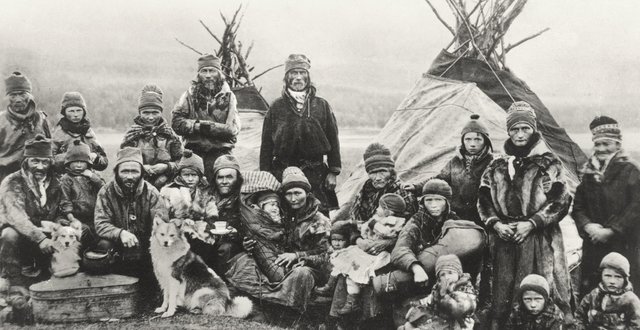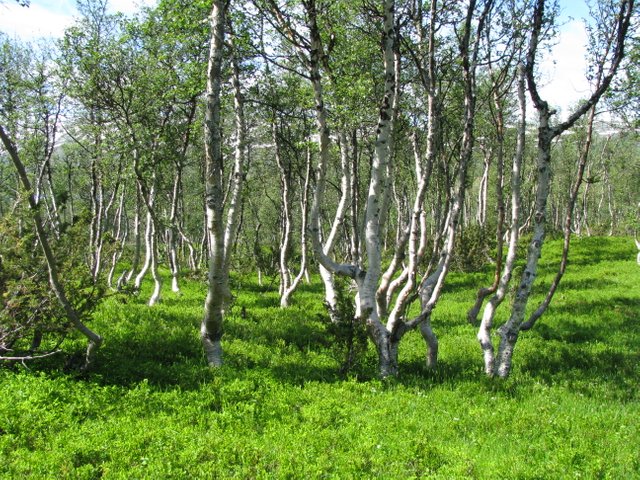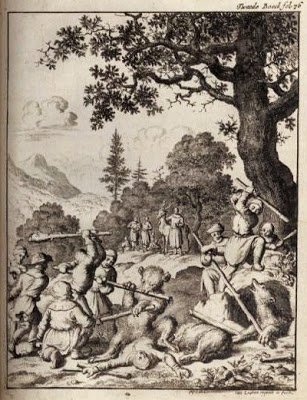
The Saami people are an indigenous arctic culture that was nearly repressed/absorbed by the more aggressive Christian Europeans in the last two centuries. Their traditional way of life survived only as a few reindeer herding groups in the end of the 20th century. Especially in Norway and Sweden, their religion and language was banned and has only now experienced a resurgence as the people attempt to reconstruct their heritage. King Harald the 5th recently apologized for this repression which is generally known but had been long ignored.


The Saami religion was a loose collection of stories and concepts centered around nature, with each animal seen as a person.
Animals are believed to have essentially the same sort of animating agency which man possesses. They have a language of their own, can understand what human beings say and do, have forms of tribal or social organization, and live a life which is parallel in other respects to that of human society (Hollowell 7).
Perhaps most important to the Saami religion, and in similar religions around the circumpolar area, is the Bear ceremony. In the Saami tradition, a bear is hunted and ritually killed, but before it is butchered the man who was chosen to kill it strikes the body with birch branches and calls himself the bear’s master. A ring of birch is made which he wears on his belt to symbolize this relationship. Other rings are made and the women of the group can only look at him by looking through such a hoop. The bear was apologized to by the group, and then the meat was divided amongst them, symbolically representing the transference of the power of the bear (Karsten 117).

To improve the community and the value of STEEM, Post and vote for creative, original work that you like.
Please try my Future History stories - Enmity

Now I understand what you meant with Saami and Nenets; I had no clue. Tell me, is "Baerdric" a name coming from that culture related to a "Bear"?
Downvoting a post can decrease pending rewards and make it less visible. Common reasons:
Submit
No, but I can't tell you how many times people have asked me if it means "Bear dick" :-D
It is a nordic languages inspired but totally invented word that means "Red Beard". A friend made it up for me in 1975 or so because even though I have dark hair, my beard was mostly red.
Downvoting a post can decrease pending rewards and make it less visible. Common reasons:
Submit
LOL
Downvoting a post can decrease pending rewards and make it less visible. Common reasons:
Submit
So now I get to ask what your name means!?
Downvoting a post can decrease pending rewards and make it less visible. Common reasons:
Submit
My family name, Tuynman means garderner. Technovedanta comes from technology and Vedanta, which in Indian philosophy is the purpose of all knowledge.
Downvoting a post can decrease pending rewards and make it less visible. Common reasons:
Submit
Ah, I see it now. I never would have thought to compare it to Hindi words. I was trying to figure out what danta meant in Dutch or something.
Downvoting a post can decrease pending rewards and make it less visible. Common reasons:
Submit